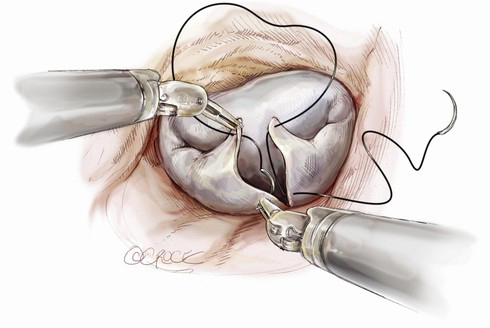Tristan Yan
Sydney Cardiothoracic Surgeon

Sydney Cardiothoracic Surgeon


Mitral valve surgery is one area that has seen some of the most impressive progress over the last two decades. With the advent of new technology, including peripheral cannulation systems, specially designed instruments, and robotic-assistance, complex valve repair and replacement can now be performed through small access incisions in the right chest without disturbing the skeleton. Minimally invasive surgical approaches offer patients gold standard results with fewer complications and a faster recovery, ensuring that despite the growth of transcatheter technologies, patients and cardiologists will not have to make the choice of trading long-term efficacy for short-term gains.
The major evolution was marked by the development of robotic telemanipulators, which overcame the limitation of long-shafted instruments by providing 3-dimensional vision and articulating instruments with a range of motion similar to the human hand. Professor Fred Mohr from the Leipzig Heart Center performed the first successful robotic mitral valve surgical case in 1998 using prototypes of the da Vinci Surgical System (Intuitive Surgical Inc., Sunnyvale, California, USA) telemanipulator. Since then, telemanipulators have continued to evolve and the latest systems provide high resolution 3D visualization, up to 10x magnification of the operating field, movement scaling, and dual console systems for surgeon co-operation and training.
Minimally invasive robotic mitral repair has an exquisite safety profile. Compared to conventional sternotomy, robotic approaches have offered the advantages of reduced bleeding, extubation on the operating room table, shorter hospital length of stay, quicker return to normal activities, and a superior cosmetic result. Professor Tristan Yan is determined to drive the robotic clinical program at the Royal Prince Alfred Hospital to be the best in the country.
Video 1. Robotic-assisted approach to mitral valve surgery provides excellent visualization of the mitral valve structures.
One of the research projects currently under investigation at RPAH is looking at the advantages of minimally invasive surgery including less bleeding, enhanced cosmesis, shorter ICU and hospital length of stay, better respiratory function, less transfusion requirement, less infectious complications and faster return to work. The project also analyses the possible complications and the reasons for the robotic approach not gaining widespread use, which may include the complexity of procedure, and the cost associated with greater initial investment, maintenance, disposable instruments and retrograde cardioplegia catheters. In the study, it has been suggested that this may be compensated for by the overall economic advantages of robotic approach, specifically shorter hospital stay, faster recovery and faster return to work. The available literature has clearly shown that the costs associated with robotic-assisted mitral valve surgery are in no way prohibitive. The potentially increased costs relative to traditional approaches are easily offset by the many advantages of the evolving technology.
While many surgeons that have not embraced or had experience with robotic surgery argue that robotic-assistance does not enhance their ability to successfully perform a mitral valve repair, the advantages with regard to visualization and instrumentation of the mitral valve and subvalvular apparatus are clear. Regardless of technical and clinical advantages offered by the robot, patients are weary of undergoing a median sternotomy and, if not offered a less invasive surgical alternative, may be content with an inferior clinical result offered by transcatheter devices. A minimally invasive robotic approach gives patients an alternative to sternotomy without clinical compromise.
Given the present cost-conscious healthcare climate, the appraisal of economics of robotic surgery, supported by the Baird Institute will only intensify and, as adoption broadens and more surgeons become facile with the technique, the balance will likely continue to move in favor of this impressive technology. Future robotic mitral operations will be customized for each patient and based on their valve pathology, comorbidities, fragility, and age as well as their surgeon’s ability. The less invasive era in cardiac surgery is here, we need to keep an open mind and adapt to change.
“Intelligence is the ability to adapt to change.”
- Stephen Hawking